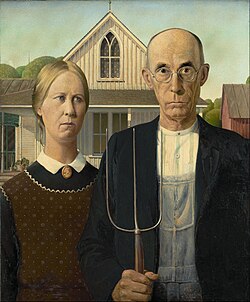
A pitchfork or hay fork is an agricultural tool used to pitch loose material, such as hay, straw, manure, or leaves. It has a long handle and usually two to five thin tines designed to efficiently move such materials.
Contents
The term is also applied colloquially, but inaccurately, to the garden fork. While similar in appearance, the garden fork is shorter and stockier than the pitchfork, with three or four thicker tines intended for turning or loosening the soil of gardens.


